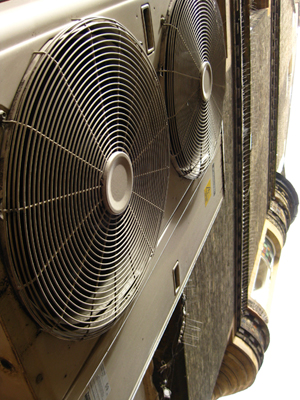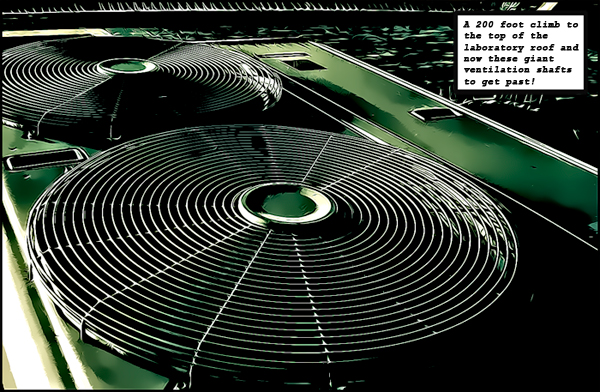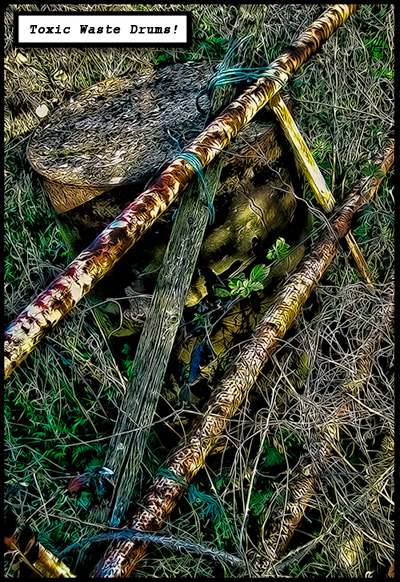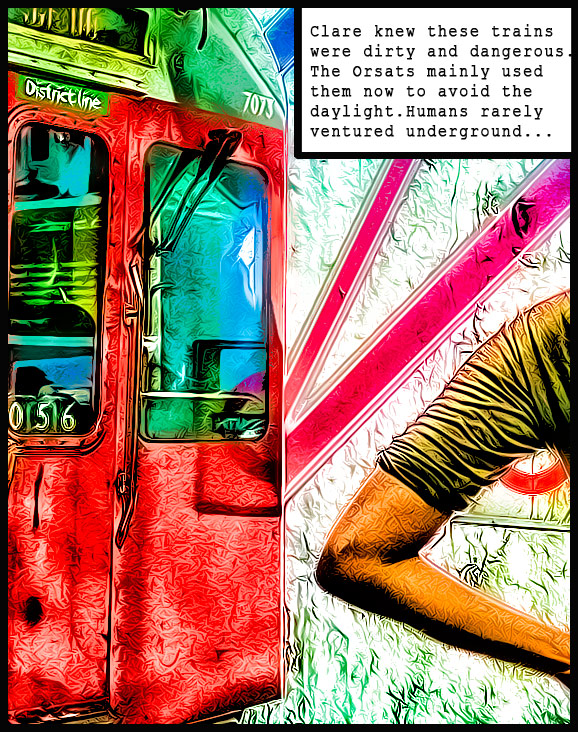Is this any different from sitting in a cafe with a notebook and pen and listening to conversations in order that one is inspired to write stories. I personally think it is pretty much the same thing happening. It is about opening oneself up to what surrounds us and then taking that and making something else out of it. It is creative recycling I suppose. Someone designed these ventilator discs and they are beautiful, but they do not necessarily have to be seen by us as just ventilator discs. I saw them as interesting shapes and something that I might like to work with in the computer. They have become shafts that are high up on a roof for my character to now have to try and descend. The visual aids the story idea. In this case I have just put together a brief example to show how a stroll around a given area can throw up alternatives to the things that we naturally see when we are out and about. We don’t have to see the use immediately, sometimes we do, and sometimes it emerges on the desktop and of course we also throw lots of things away too.
I could of course sketch them and I have a new ability on the Ipad2 to do this. The wireless feature is only available with the latest version of Photoshop (5.5). This will prove incredibly useful as we are now able to easily carry very mobile lightweight authoring devices for our words, images and sketches wherever we go. The outside environment can be a creative space for doing, or it can also be a quick means of getting our ideas down and then bringing them back to the desktop environment for new story development and idea generation. This process is forcing me to write, draw, paint, and take photographs so regardless of the eventual outcome I think that is a pretty good creative workout. The work done here will pay off somewhere else if it doesn’t deliver a conclusion in terms of a graphic novel. I am creating a lot more and when I do that I feel happier so as an overall exercise I am pleased with where it is taking me.
I think with my interest in science fiction shows, as these images are all tending to refer to that genre. I do find the images useful also for stories that I write that have no graphical elements. They help me to visualise environments and situations a little better. They also provide an ideal method of producing believable descriptions for readers as I have the elements I need in front of me and I can see the smallest of details. I would refer to them rather than religiously copy from them as I want them for locking down detail. I don’t want them to prevent the imagination flow hence I am careful to just use them as reference.
I am finding the idea of making a graphic novel much more fascinating than I first thought I might. I have always read them but never analysed too closely why I enjoyed them. When one gets into the mindset of trying to tell a story in that way, a whole world of different art forms merge and I realise the discipline and hard work that must go into making a coherent cohesive (not necessarily linear narrative) story. It is a great learning experience for all forms of creative endeavour’ form novel writing to film making. I am fortunate in that I have always read a lot and have a wide knowledge of cinema, so I am able to perhaps see Fassbinder in a street corner or feel Robert Bresson in the simple act of a opening a door onto a street. I have seen and felt what these artists have done with tiny elements and how they have created worlds with their unique vision. They simply make you more aware of the things that go unnoticed and for that these directors are an enormous help in thinking visually. In terms of drama I love Tennessee Williams as an author he created brilliant memorable characters and lovely vignettes of place with small precise details much as Hemingway did. Theatre in Greek originally meant ‘seeing place’ so it is very interesting to see how Tennessee Williams wrote very visually, some playwrights don’t manage to understand that point at all.
Related Articles
- Typing, or writing? (dublinzine.wordpress.com)
- Note Taking 101 (desertmusepublishing.wordpress.com)
- Twyla Tharp’s Creative DNA exercise (satsumaart.wordpress.com)





